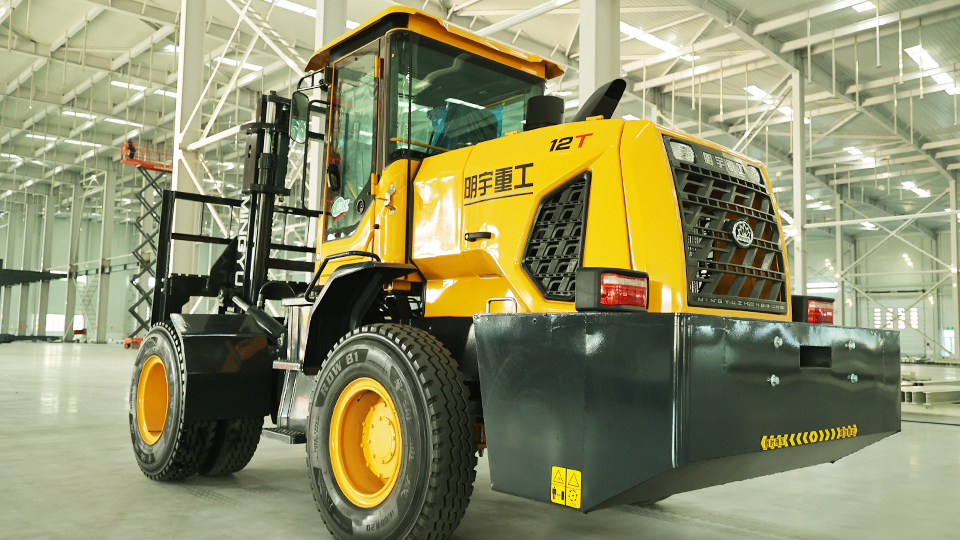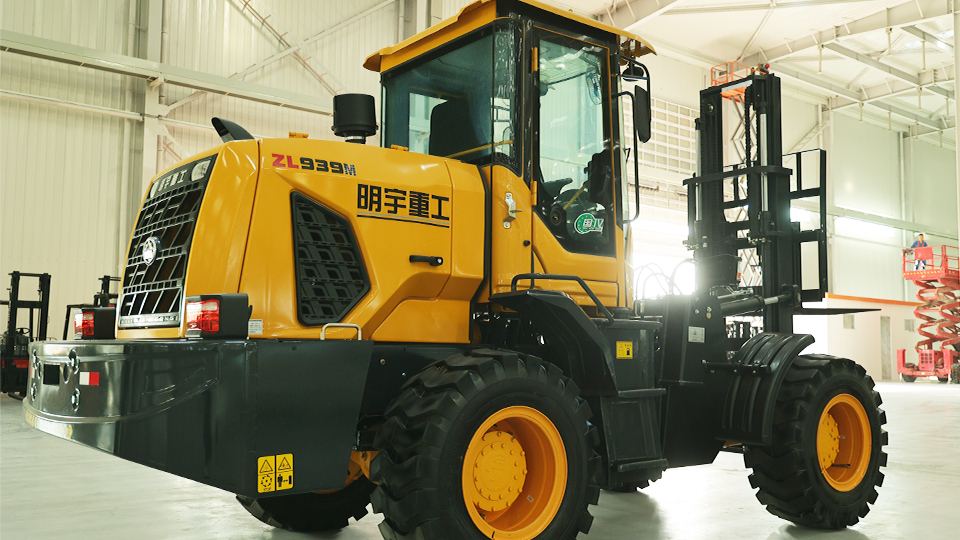
Abstract:
Off-road forklifts are highly specialized material handling machines designed to operate in challenging, unpaved environments such as construction sites, agricultural fields, lumber yards, and industrial facilities with rough terrain. While their acquisition represents a significant capital investment, renting these robust machines offers a flexible and cost-effective alternative for businesses facing temporary or project-specific needs. This technical article explores the viability of renting off-road forklifts, detailing the types available for hire, the various rental durations, and the key factors that influence rental rates. It provides an overview of typical rental costs, outlines the advantages and disadvantages of renting versus buying, and offers practical advice for negotiating rental agreements to optimize operational efficiency and budget management.
1. Introduction
In the dynamic and demanding sectors of construction, agriculture, forestry, and heavy industrial operations, the ability to efficiently move and lift heavy materials across uneven, unpaved, or debris-laden terrain is paramount. This specialized task falls squarely within the capabilities of off-road forklifts, often referred to as rough terrain forklifts, all-terrain forklifts, or even, in many cases, telehandlers due to their overlapping functionality. Unlike conventional warehouse forklifts, these machines boast ruggedized chassis, increased ground clearance, powerful engines, and specialized pneumatic tires designed for superior traction and stability on challenging surfaces like mud, gravel, sand, and slopes.
For many businesses, the need for an off-road forklift is often project-specific, seasonal, or driven by unforeseen circumstances. The outright purchase of such a specialized piece of heavy equipment entails a substantial capital outlay, along with ongoing costs for maintenance, storage, insurance, and eventual depreciation. This financial commitment can be prohibitive for small to medium-sized enterprises or for larger companies undertaking short-term projects that do not justify permanent ownership. This is where the strategic option of equipment rental enters the equation.
The central inquiry for many operational managers and procurement specialists, therefore, revolves around two critical questions: Are off-road forklifts readily available for rent? And what are the associated rental rates? This technical article aims to provide a comprehensive answer to these questions, guiding decision-makers through the rental landscape. We will delve into the types of off-road forklifts available for rent, dissect the typical rate structures, explore the myriad factors that influence these costs, weigh the advantages and disadvantages of renting versus buying, and offer practical advice to ensure a smooth and cost-effective rental experience. Understanding these facets is crucial for optimizing project logistics, managing budgets effectively, and maintaining operational agility in diverse rough terrain environments.
2. The Availability of Off-Road Forklift Rentals
The market for heavy equipment rentals, including specialized machinery like off-road forklifts, is robust and well-established across North America, Europe, and other industrialized regions. This widespread availability means that businesses, regardless of their size, can access the right equipment precisely when and where it's needed, without the burden of ownership.
2.1 Confirmation of Rental Market Existence
Indeed, off-road forklifts are a staple offering within the fleets of major equipment rental companies and specialized industrial equipment dealerships. Companies such as United Rentals, Herc Rentals, Sunbelt Rentals, and a multitude of independent local and regional providers prominently feature rough terrain forklifts and telehandlers in their inventories. This extensive network ensures that, in most populated or industrially active areas, an off-road forklift is just a phone call or online inquiry away. The prevalence of rental options underscores the economic viability and operational convenience that renting provides for project-based work or temporary capacity augmentation.

2.2 Key Players in the Rental Market
The rental market is fragmented but dominated by a few large entities alongside numerous regional and local specialists.
National Chains: Companies like United Rentals and Herc Rentals operate vast networks across continents, offering a wide array of equipment, including various models of rough terrain forklifts and telehandlers. Their extensive inventory and broad geographical reach make them a go-to for large-scale projects or multi-location operations.
Dealer Networks: Many forklift manufacturers (e.g., JCB, Manitou, Genie, JLG, CAT Lift Trucks) have authorized dealerships that not only sell new and used equipment but also maintain dedicated rental fleets. Renting directly from a dealer often provides access to the latest models, manufacturer-certified maintenance, and specialized technical support for that brand.
Independent Local Providers: Numerous smaller, independent rental companies serve specific geographic regions. These providers can sometimes offer more personalized service or competitive rates for specific local demands.
2.3 Types of Off-Road Forklifts Available for Rent
The term "off-road forklift" encompasses a range of machines, primarily falling into two main categories commonly found in rental fleets:
2.3.1 Straight Mast Rough Terrain Forklifts: These machines resemble conventional counterbalance forklifts but are built with a more rugged chassis, greater ground clearance, and large, deep-lug pneumatic tires. They are designed for lifting and transporting loads over uneven, soft, or rocky ground. Rental fleets typically offer both 2-wheel drive (2WD) models, which are lighter and more maneuverable for less severe terrain, and 4-wheel drive (4WD) models, which provide superior traction and stability on extremely challenging surfaces like mud, sand, or steep inclines. Their straight, vertical mast allows for precise vertical lifting but limits horizontal reach compared to telehandlers.
2.3.2 Telehandlers (Telescopic Forklifts): While technically distinct, telehandlers are often cross-listed with off-road forklifts due to their shared ability to operate in rough terrain and perform material handling tasks. They feature a telescopic boom that can extend both upwards and forwards, offering significantly greater reach and versatility than a straight-mast forklift. This makes them ideal for reaching over obstacles, lifting materials to upper floors of buildings, or unloading trucks from one side. Telehandlers are almost universally 4WD and designed for heavy-duty off-road use. Their popularity in construction and agriculture means they constitute a large portion of the "off-road forklift" rental market.
2.3.3 Heavy-Duty Pneumatic Tire Forklifts: For applications requiring exceptionally high lift capacities (e.g., 15,000 lbs to over 100,000 lbs) on unpaved surfaces, some rental companies offer specialized heavy-duty forklifts equipped with robust pneumatic tires. These are typically used for moving large industrial components, concrete blocks, or timber.

2.4 Common Lift Capacities and Lift Heights Available
Rental fleets typically stock a range of capacities to meet diverse project needs. For rough terrain forklifts, common rental capacities often range from 6,000 lbs to 12,000 lbs, with lift heights from 10 to 22 feet. Telehandlers offer an even wider range of capacities, typically from 5,000 lbs to 15,000 lbs, with reaches extending from 19 feet to over 55 feet. Larger, specialized units may also be available, but usually on a more limited basis and at significantly higher rates.
Name: selena
Mobile:+86-13176910558
Tel:+86-0535-2090977
Whatsapp:8613181602336
Email:vip@mingyuforklift.com
Add:Xiaqiu Town, Laizhou, Yantai City, Shandong Province, China